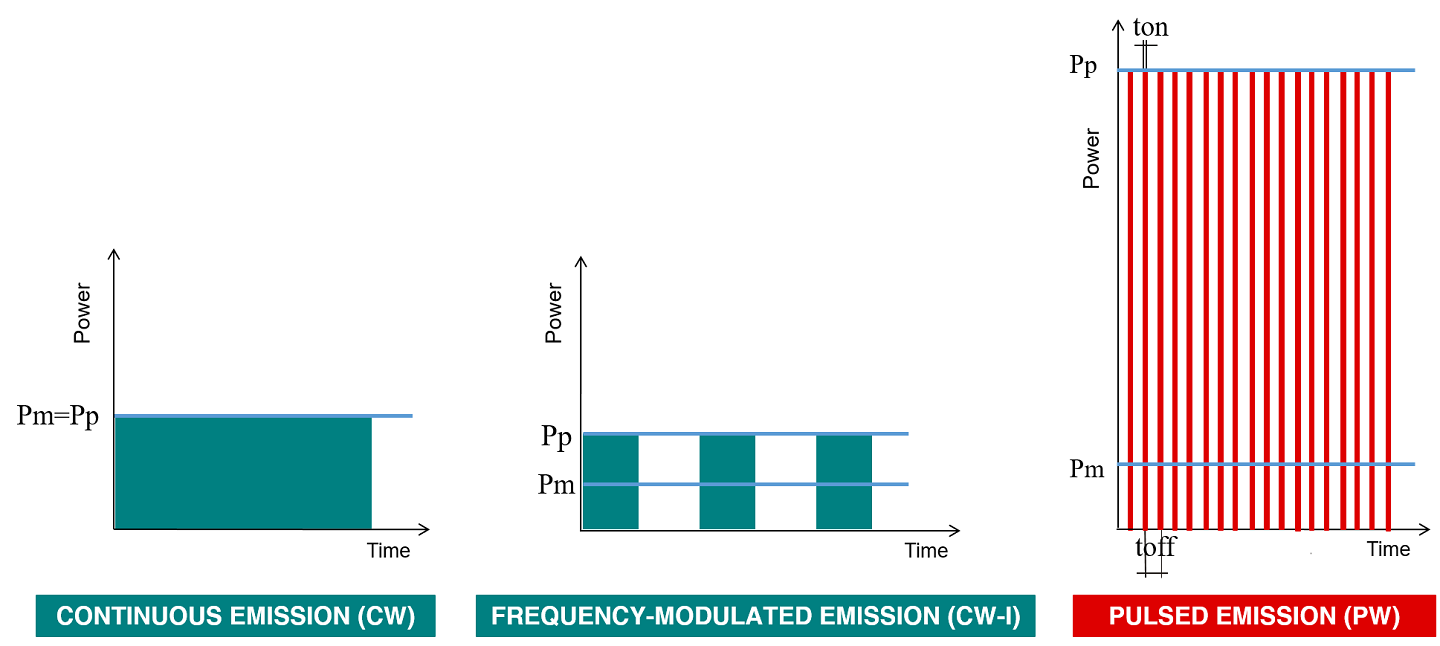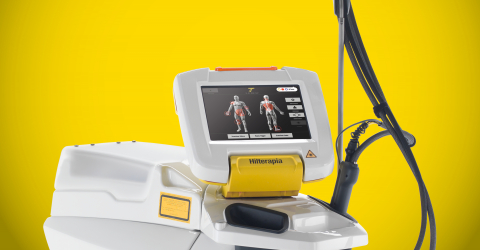Understanding laser therapy. Nd:YAG laser vs. Diode laser with equal wavelengths
Over the last twenty years, the use of laser therapy in the medical field has attracted the attention of many Operators, who are increasingly interested in understanding its use and effectiveness in the treatment of common diseases.
For an informed approach, a key priority is to investigate how a laser works, what is meant by laser sources and what types are currently on the market, comparing these in order to outline the differences and the actual features.
Only when concepts such as Nd:YAG laser source and diode laser source become part of the personal vocabulary, will it be possible to confidently choose the device to rely on.
Comparison by source
The Nd:YAG Laser is a solid state laser which uses as active medium (emission source) a crystal of yttrium and aluminium (YAG) doped with atoms of Neodymium (Nd). Hence the name Nd:YAG. This source typically emits a monochromatic light radiation characterised by a 1064 nm wavelength (infrared light) which is very well defined.
The 1064 Laser Diode is instead a semiconductor laser source whose active medium is a mix of semiconductor materials, such as InGaAsP (Indium-Gallium-Arsenic-Phosphorus). This diode emits a band of wavelengths partially within 1064nm: a substantial difference compared with the Nd:YAG which releases a monochromatic light instead. These laser diodes are sometimes called "YAG diodes" or even Nd:YAG lasers, but the terminology is inappropriate and is used to draw attention to the similarity between their emission wavelength and that of the Nd:YAG laser (1064nm).
Comparison by emission mode
As far as therapeutic lasers are concerned, there are two types of Nd:YAG construction: Continuous and Pulsed. A fundamental distinction if we consider that the Continuous system cannot emit in pulsed mode (PW) and that the Pulsed system cannot work in continuous mode (CW).
Specifically as concerns diode systems, all CW diodes such as 780nm, 810nm, 980nm, 1064nm can only work in continuous or continuous-interrupted (frequency-modulated) mode, while they cannot work in pulsed mode for technical reasons.
Pulsed - Continuous/Frequency-modulated: terminology specification
The Continuous emission laser (both the 1064 Diode and the Continuous Nd:YAG), cannot emit in Pulsed mode but, by interrupting the continuous emission in a repetitive manner, can generate a Frequency-modulated emission.

The distinction between Continuous interrupted and Pulsed is abyssal as the energy impact necessary to reach the deepest tissue layers in total safety, without ever exceeding the threshold of thermal damage, can only be created with extremely high pulses (intensity in the order of kilowatts per cm2) and, in order not to be harmful, extremely short, with rather long pauses between one pulse and the next. This is only possible with Pulsed high intensity laser systems.
Continuous interrupted lasers (frequency-modulated), on the other hand, reach a maximum intensity of a few tens of Watts per cm2 with emission/pause times (ON/OFF) which cannot guarantee thermal safety when seeking maximum power. This is an absolutely not insignificant technical detail.
The only PULSED 1064nm laser source currently on the market is the Nd:YAG source used in the Hilterapia® devices.
This is an FDA-approved, and patented in the US, exclusive Nd:YAG source, where the energy is not emitted continuously, but via pulses ("energy packages") characterised by a short duration and a very high intensity (5.000-15.000 W/cm2), unattainable by any other laser source currently on the market.
This Nd:YAG PULSED laser source should not be confused with the outdated Nd:YAG CONTINUOUS one, used in the past in some therapeutic lasers nor, even less so, with the cheaper 1064nm diode which replaced it.
Mode of emission: let's take stock
Incorrect terminology is often used in a misleading way not just when defining the laser source, but also for describing the emission mode, contributing to generating confusion for non-laser experts.
Terms such as "Pulsed", "Hyper Pulsed", "Super Pulsed" and "Ultra Pulsed" are often not correctly used in catalogues, brochures and websites to indicate the possible operating modes of continuous diodes. These emission modes are nothing more than continuous-interrupted emissions modulated with more or less high or low frequencies (up to tens of kHz) or different duty cycles, but they have completely different emission features, distinct from those of real pulsed lasers.
The high quality of the HILT® pulse (High Intensity Laser Therapy) generated by the pulsed Nd:YAG allows the energy to be transmitted much deeper in total safety and, thanks to the patent, has unique features which cannot be imitated.
On the contrary, continuous power diodes have a shallower action and often result in an uncontrolled thermal accumulation on the skin which prevents them from being used at the maximum declared powers.
The 1064 diode laser and Hilterapia® (pulsed Nd:YAG) systems are totally different in terms of:
-
laser source
-
emission mode
-
deep therapeutic efficacy
-
treatment safety
Hilterapia® is therefore the ONLY Laser therapy which uses the Nd:YAG source (1064 nm) with high intensity pulsed emission (5,000/15,000 W/cm2) and high peak power (1-3 kW).









